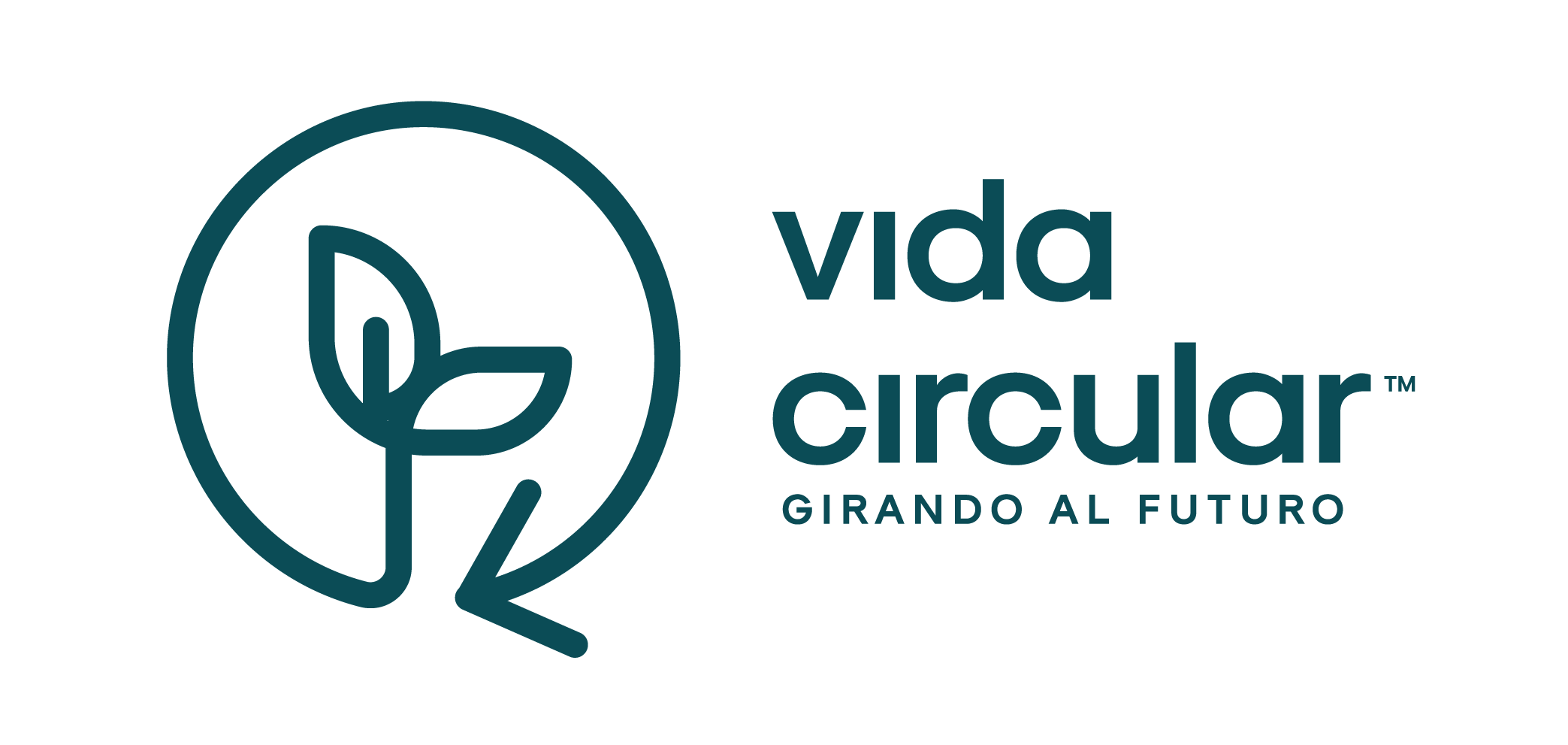
HDPE (high-density polyethylene) is a thermoplastic polymer, resistant to impact, tensile strength and high and low temperatures, commonly used in packaging for cleaning products, shampoos, detergents and more. Although less well known than PET, HDPE has enormous recycling potential and can be transformed into completely new and different products. At Circular Living, we want to highlight the importance of this material and how, through recycling, we can contribute to a sustainable cycle.
What differentiates HDPE from PET and how to identify them?
Although both HDPE and PET are recyclable, they have different characteristics and are therefore used in the manufacture of packaging for different markets. Here we explain how to tell them apart:

PET
(polyethylene terephthalate)
This is the plastic used mainly in beverage and food bottles. Its recycling symbol is the number 1, and it is usually transparent or light-colored.

HDPE
(high density polyethylene)
This type of plastic is denser and more resistant, and is common in opaque containers, such as milk bottles, detergents and personal care products. Its recycling symbol is number 2, which easily distinguishes it from PET.
The key difference lies in their use and appearance: while PET is clearer and used for food, HDPE is usually opaque and stronger, designed for products that require a more resistant package.
Examples of products using HDPE bottles
HDPE is found in many products we use in our daily lives. Here are some common examples:

Personal care bottles
Bottles of shampoo, conditioner, body cream and personal hygiene products.

Household cleaning containers
Bottles of detergent, fabric softeners, all-purpose cleaners, bleaches and disinfectants.

Food packaging
Milk bottles, juice bottles, and edible oil containers.

Industrial containers
Drums and drums for chemical or industrial products, both liquid and powder.
These bottles, often opaque or brightly colored, are made of HDPE because of its durability and resistance to chemicals.

The Recycling Potential of HDPE
One of the most amazing features of HDPE is its ability to reinvent itself through recycling. In addition to being used for packaging, HDPE is used in other applications such as pipes, buckets, bags and boxes. The HDPE recycling process involves collecting, sorting, shredding and extruding the recycled material. This plastic is particularly valuable because it is strong and durable, making it an excellent material for recycling. However, despite its potential, the collection rate of HDPE in Mexico is still not as high as that of PET. HDPE bottles are often mixed with other waste, making it difficult to recycle.
Why is it important to separate HDPE bottles?
HDPE has great potential in the world of recycling. Properly separating it can have a positive impact on the environment by promoting the circular economy through the manufacture of new products made from recycled material.
The wonderful thing about recycling HDPE is that it can be turned into a completely different and new container. Through recycling, it can be transformed into pipes, toys, storage containers, park benches and other highly durable products. This cycle not only prevents plastic from ending up in landfills or in the environment, but also promotes a circular economy where resources are reused efficiently.
The HDPE recycling process consists of several stages
It is necessary to collect HDPE waste for recycling. This waste can come from different sources, such as households, industry and commerce. Once collected, it is sorted according to quality, composition and color.
Once sorted, the waste is shredded into small particles. This is done through the use of shredding machines that reduce the size of the waste to facilitate further processing.
Once ground, the HDPE particles undergo a washing process to remove any contaminants, such as dust or residues of other materials.
Once the HDPE has been washed, it is dried to remove any trace of moisture.
This is the process by which HDPE is melted and molded into pellets. At this stage, the plastic is heated to high temperatures and passed through an extruder machine that shapes it. The pellets are used in the manufacture of new products.
ALPLA's role in HDPE recycling in Mexico
In Mexico, ALPLA Recycling has taken the lead in HDPE recycling by investing in plants dedicated to processing this type of plastic. These facilities are equipped with advanced technology to convert used HDPE bottles into high-quality recycled resin, which is then used to manufacture new products. Recycling HDPE not only helps to reduce the use of virgin plastic, but also boosts sustainability by extending the useful life of this material. ALPLA Recycling in Mexico is committed to maximizing the potential of this plastic and continuing to build a circular economy that benefits both the environment and people.

What can you do?
Although HDPE separation is low in many households, you can make a difference. Here are some simple steps to help:
Check the recycling number
Check the bottom of the bottles for the number 2, which indicates that they are made of HDPE.
Separate your HDPE bottles
Be sure to separate HDPE bottles from other plastics and dispose of them at the appropriate recycling points.
Compact
the bottles
Compacting HDPE bottles facilitates their transport and storage for recycling.
Supports products made from recycled HDPE
Opt for products that have been manufactured from recycled HDPE, helping to close the life cycle of this material.
Remember, although this type of plastic often has a low separation rate at home, it is one of the most valuable and versatile materials we can recycle. Transforming the world with every action, HDPE recycling can generate new, innovative and durable products. By separating your HDPE containers, you too can help reinvent this material and give it a new life.

